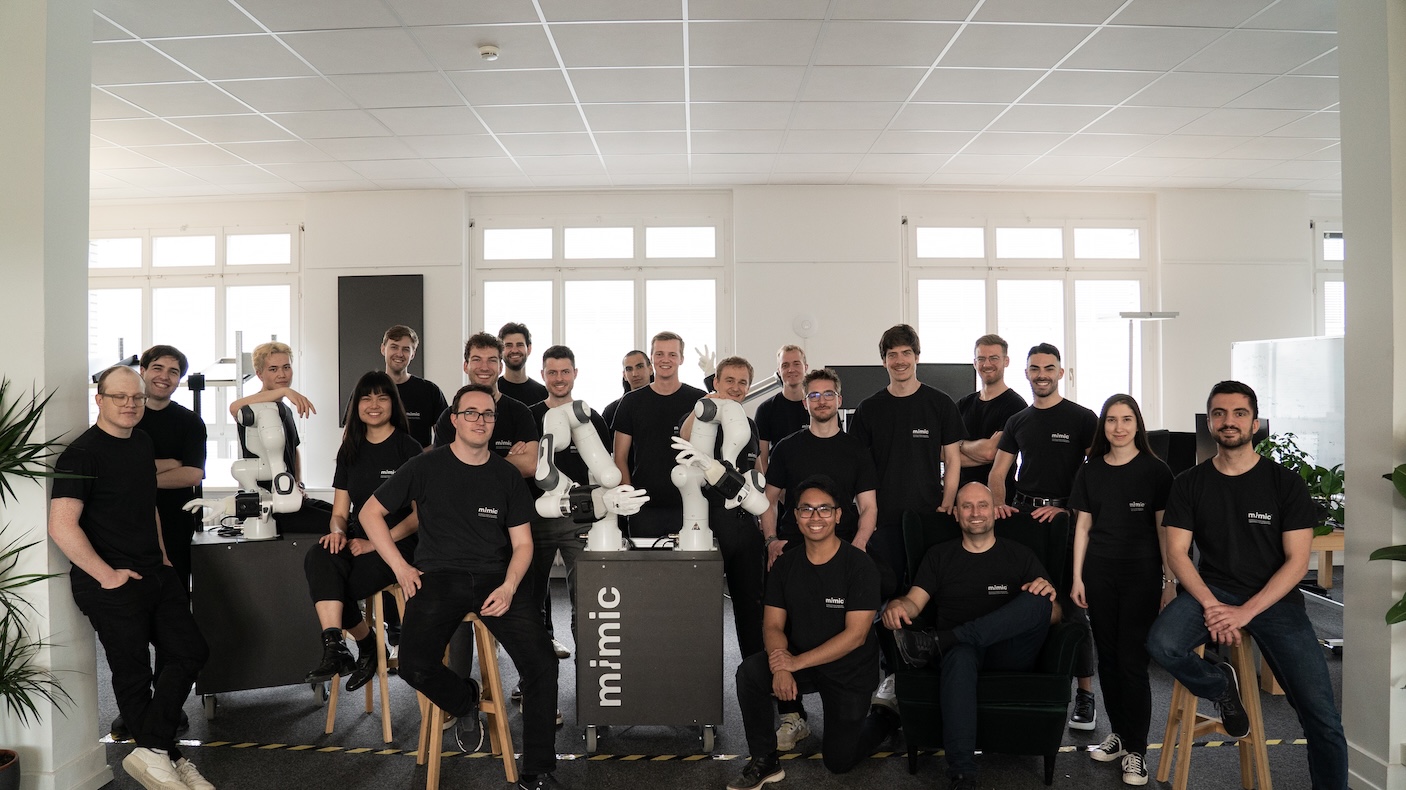Why Smart VCs Bet on Weird Ideas: An Investment Thesis to Find the Next Generation of Consumer Titans
Developing an investment thesis is always tricky. For one, VCs don't have a crystal ball and in tech, as in most things in life, the only constant is change.
There are two key ways we approach tackling this:
- A thesis needs to be specific enough to narrow our focus as investors. This way, we can hone our expertise and apply it to pick better investments and also add some positive value to our portfolio companies.
- At the same time, it needs to be broad enough to cover all relevant technology-enabled changes happening around us. After all, we are not clairvoyant. To paraphrase Warren Buffet and Benchmark, our job is not to predict the future. Rather, it is to develop a very good understanding of the present.
How do we apply this seemingly contradictory philosophy to our domain – Marketplaces & Consumer startups?
We first need to point out the obvious (at least to us). Historically, winners in this space have been notoriously non-obvious and non-consensus (even more so than other startup categories). Getting into a stranger’s car, staying in a stranger’s home, sending disappearing pictures, and letting kids build games for other kids would have all sounded utterly ridiculous 15-20 years ago (imagine listening to those pitches as a pre-seed or seed investor!).
Yet, the companies that do those things are now collectively worth more than $300 billion and are household names – Uber, Airbnb, Snapchat, and Roblox. If we are to find winners in this domain, we need to suspend disbelief and develop a first principles-based framework to evaluate new companies.
Now that we have the background, we can go back and evaluate some of the marketplace & consumer winners over the past couple of decades. What enabled those companies? Obviously, great founders to start with. No company would get far without that.
There are some nuances here that we will come back to later. Was there anything else that made these companies special? They took advantage of network effects, which will always remain a key focus for us.
They are among the strongest forms of defensibility and the most enduring drivers of value in the history of technology.
What else? In our judgment, two key enablers contributed to their success – and are key components of our investment thesis.
1. Technology Change

This one will initially seem obvious, but the impact of technology change is often non-obvious. The best example might be the explosion of smartphone adoption after the launch of the iPhone in 2007 and its aftermath. The moment you first used an iPhone (or Android phone), you knew this was going to be a thing – no expertise required. Smartphones brought the internet to your pocket, on-demand. Embedded GPS functionality was among the key features that smartphones had. People thought this would revolutionize mapping – and it did.
The obvious opportunities were captured by incumbents (e.g. Google Maps). We did see a whole wave of location-based consumer startups – from Loopt to Foursquare. However, the true winner of this technology change wasn’t a mapping company at all. It was Uber. The availability of smartphone GPS allowed Uber to provide live tracking of a car coming to pick you up and the estimated pickup time. What would have previously required satnav equipment to be installed in each car, now just required the driver to have a smartphone. Uber willingly enabled this, which unlocked network effects between riders and drivers. The result was on-demand transportation anytime, anywhere and eventually a valuation exceeding $150 billion. Clearly a winner, but by no means the obvious beneficiary of smartphone GPS.
Another good example is the rapid growth in cloud computing capabilities and consequently consumer internet usage in the 2000s. By the mid-2000s, there was general consensus that the internet was going to be a phenomenal driver of change and new companies. While the Internet was already mainstream with adults, usage from younger children was on the rise and this especially took off in the early 2010s. What do 9-13-year-old kids do on the internet? They can't use social media. Finding other ways to entertain themselves is one big use case.
This period also coincided with cloud computing becoming good enough and cheap enough to enable high-quality consumer experiences like online multiplayer games. Gaming companies were the obvious beneficiaries – and there were a few that exited at or above $1 billion. But the biggest winner, by far, wasn't a gaming company at all – at least not the way we think about them. Instead, it was Roblox, a company that enabled kids to create games for other kids. The resulting network effect between game developers and players resulted in Roblox being 5-10 times more valuable than any gaming company founded in the last 25 years in the US/Europe.
So what technology change do we see affecting the world today? The answer is obvious – AI.
Hundreds of millions of people have used ChatGPT and the technology clearly brings new capabilities to the world. In addition, the Deepseek moment shows that the models themselves are being commoditized with the cost of intelligence trending towards near-zero. This should benefit applications – and in our case, consumer AI applications. However, many of the implementations we see in consumer AI still fall into the obvious bucket – chat-based interfaces and text/code/media generation in some form. Many of these companies face the double whammy of intense competition and weak defensibility.
What non-obvious opportunities exist in this world? One area of interest for us is “AI-enabled multiplayer interactions”. What type of novel multiplayer interactions can be created now that intelligence is cheap and easily accessible? Multiplayer interactions are a necessity for network effects to exist, which can then create real defensibility. As always, we may see some v1.0 flameouts before these v2.0 iterations can emerge.
2. Behavioural Change

Technology changes are always in vogue. However, comparatively few investors pay attention to behavioural change. It is arguably just as important, if not more important than technology change. Because unlike technology change, the triggers for behavioural change themselves are non-obvious.
Airbnb is a great example of the impact of behavioral change. By the time Airbnb was founded (2007), internet penetration was already at ~75% in the US. People were already accustomed to buying and selling online. There was no technological change on the horizon here. Also, it was not a mobile product and did not benefit from smartphone adoption taking off post-2007. So in the absence of a technology shift, what enabled Airbnb? We already glossed over part of the answer a few sentences ago: people were already accustomed to buying and selling online.
Buying products online via eBay and Amazon has already become normalized. There were also early signals that people had begun discovering other things on the Internet. Craigslist – which had existed for more than a decade by this time – was adding several new categories including short-term rentals (initially pioneered by VRBO). However, establishing trust was a challenge for Craigslist. Creating a better, more dedicated listing, search, and most importantly review experience helped establish trust and strong network effects between hosts and guests. That resulted in a short-term rental marketplace that generated 11x more revenue than Craigslist’s peak revenue across all categories.
Snapchat was also a beneficiary of behavioural change. The company was founded in 2011 but really burst into the scene in late 2012/early 2013. At this time, smartphone adoption was already mainstream at roughly 40% penetration in the US. Smartphone cameras and messaging were already mainstream – Instagram already had 100M+ monthly active users, WhatsApp had 300M+ and, of course, Facebook was a behemoth with 1.2B+. There was no real technology change at this time, so what caused Snapchat’s rise?
By this time, a whole generation of young adults had been sharing photos for years, using smartphones and social networks. However, photos shared on Facebook and Instagram were largely public, i.e. users were very conscious of which photos reached the threshold of shareability – creating a degree of anxiety.
Snapchat flipped this dynamic on its head by introducing the concept of disappearing photos. All of a sudden, pictures could be taken at the moment and exchanged privately without any thought to who else might see them – they were meant to disappear. This created a whole new form of photo-based communication and is now used by more than 400 million people a day.
What behavioral shifts do we see at play today? The current generation of teenagers and young adults (marketers refer to them as GenZ and GenAlpha) have grown up with smartphones and ubiquitous internet access. Pretty much every facet of their lives is shared with their friends – via messaging apps, social apps, etc. One of the ideas that we’re intrigued by is products that add a social layer on top of clear underlying utility.
This is not “social media” in the traditional sense. Rather, they are networks created by adding a social layer to a previously mundane or very single-player experience. Companies like Zenly/Bump (location), Airbuds (music streaming), Howbout (calendar), Blindmate (dating), KnowUnity (study notes), Revyze (study videos) and Cino (bill splitting/payments) are all good examples.
3. Team
Finally, what makes someone a great marketplace or consumer founder?
Like any great founder, they need to be intelligent, great storytellers, and have the ability to attract talent. This applies to all great startup founders, not just those building marketplace or consumer companies. They also need to deeply understand their customers or users – and this is where the divergence with other categories (esp. B2B companies) begins. Typically, developing an understanding of a business or technical problem requires deep expertise or understanding of the space – one of many reasons why investors gravitate towards ex-unicorn employees or serial founders.
However, top-notch experience does not necessarily give you a better understanding of a 19-year-old college student, or a 22-year-old in their first job. And understanding the user and their pain points is often a key driver behind the insight that creates breakthrough consumer products. Data shows that these insights can be discovered by special people across the experience spectrum. Sometimes, they are young, first-time founders – who are themselves their first user, e.g. Brian Chesky (Airbnb) and Evan Speigel (Snapchat). Other times, they are more experienced operators or have prior founder experience, e.g. David Baszucki (Roblox) and Travis Kalanick (Uber).
What is important across this spectrum – and something we look for – is the founders’ personal relationship with the problem, what helps them understand users and uncover these insights. We find this to be more valuable than their CV in isolation. Another common thread is being opinionated and an independent streak. Without this, they would be talked out of the idea just as soon as they had it – these are non-consensus products after all.
Let’s connect!
If any of this describes you and what you’re building, come talk to us. We're not scared away by unusual products or markets that don’t exist yet. The market for on-demand taxis, short-term rentals, disappearing pictures, and games created by kids was non-existent 15-20 years ago. We’re looking for founders building real products that solve problems for real people – and end up changing the world.













.svg)
